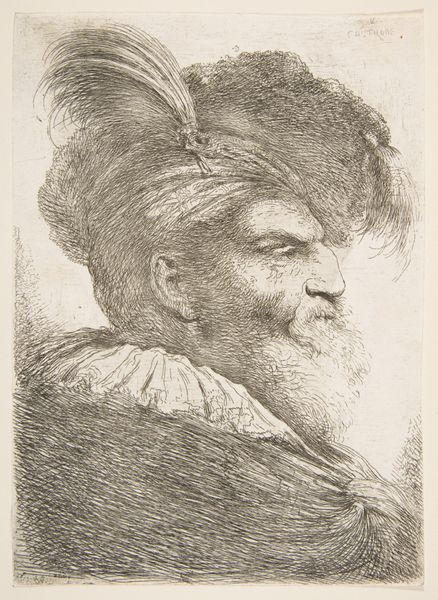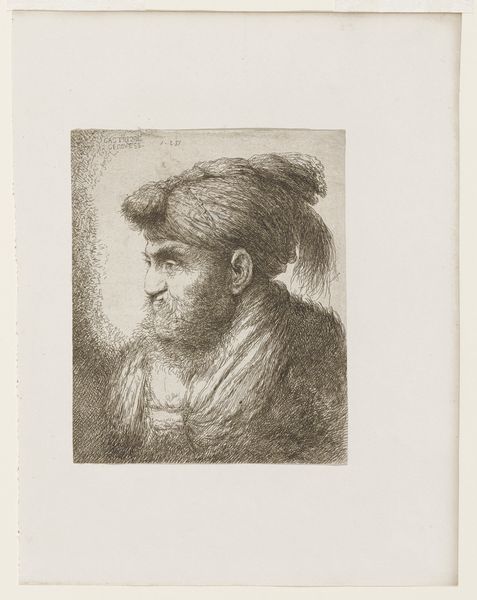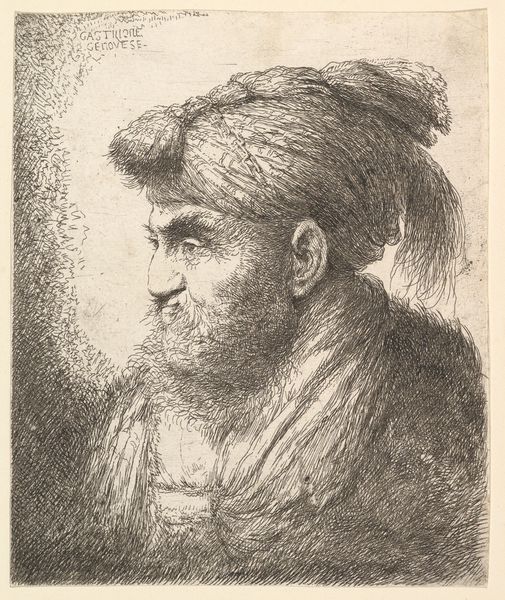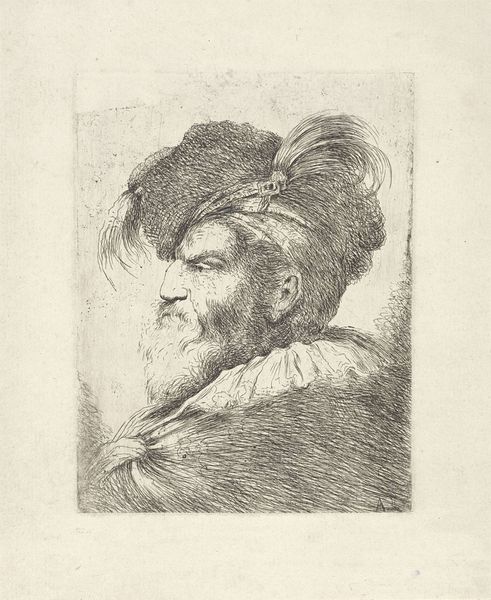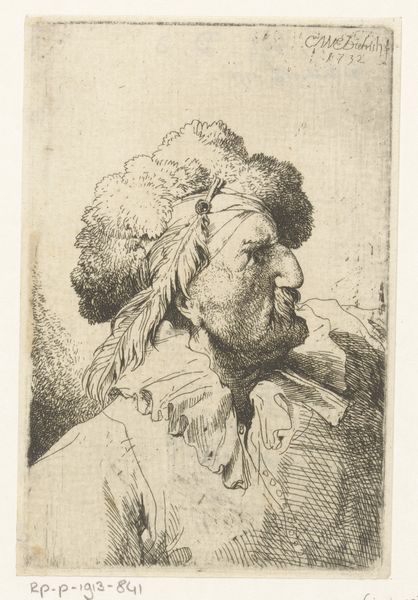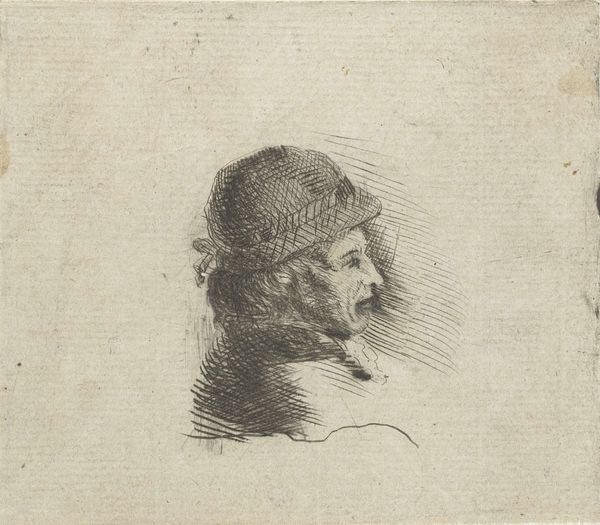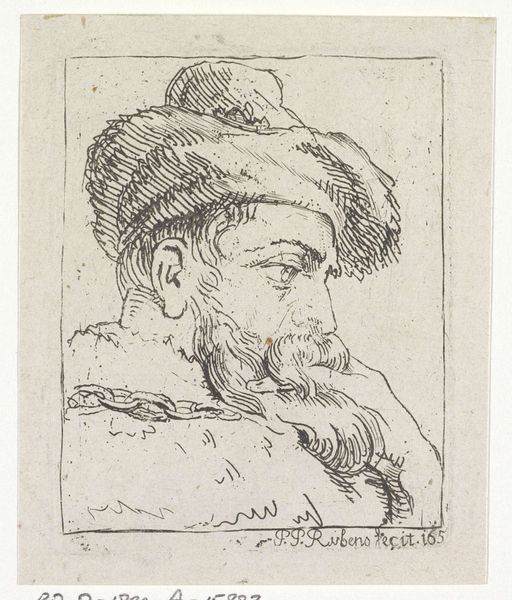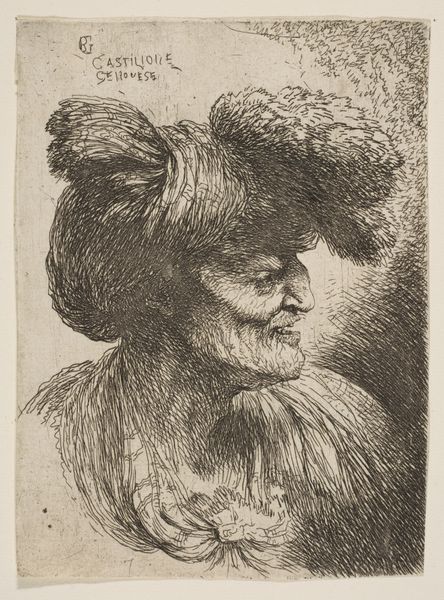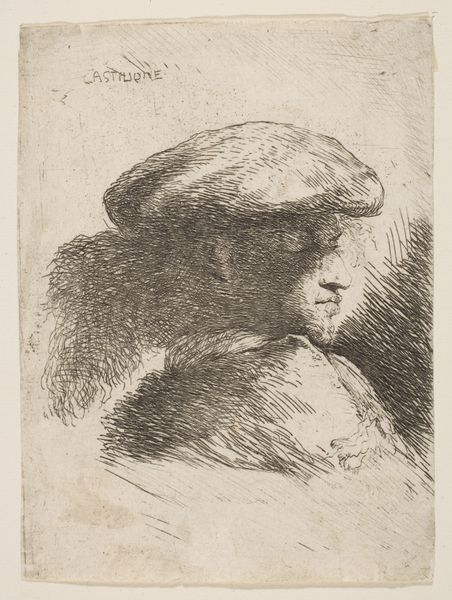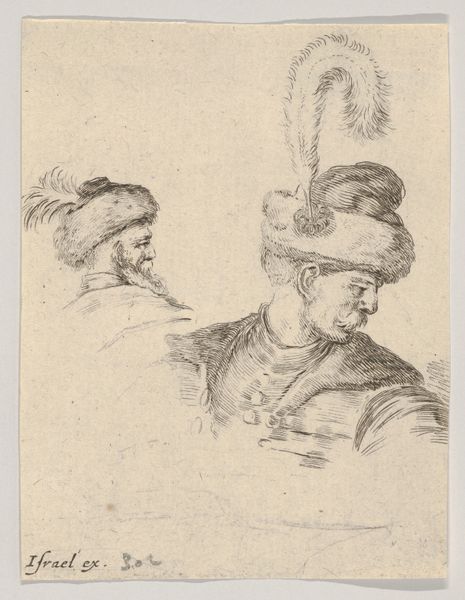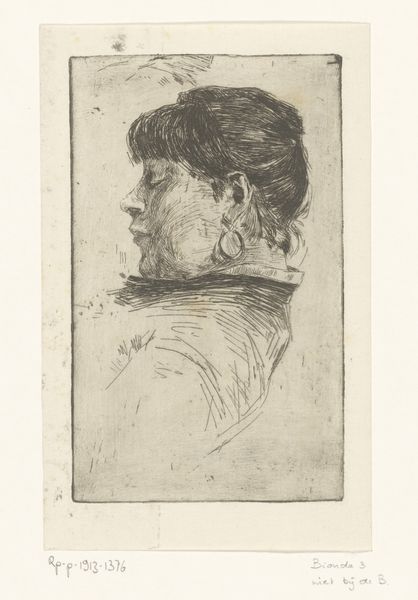
Man in profile facing right, wearing a fur hat, from "Small Heads in Oriental Headdress" 1635 - 1655
0:00
0:00
drawing, print, etching
#
portrait
#
drawing
#
baroque
#
head
# print
#
etching
#
men
#
dress
#
profile
Dimensions: plate: 4 1/4 x 3 1/8 in. (10.8 x 8 cm) sheet: 9 7/16 x 7 5/16 in. (24 x 18.5 cm)
Copyright: Public Domain
Editor: Here we have Giovanni Benedetto Castiglione's etching, "Man in profile facing right, wearing a fur hat," created sometime between 1635 and 1655. I’m struck by how much detail he managed to capture just with etching. What stands out to you about this work? Curator: The striking fur hat and clothing immediately signal material status. This wasn't simply a study of a person, but a carefully constructed image of someone who likely had access to certain materials, someone who engaged in specific modes of consumption, indicating wealth and social standing through what they wore and, indeed, how Castiglione chose to depict them. Consider the physical labor involved in acquiring the fur and transforming it into the fashionable headwear, and then the labor of the artist to transform that image again via printmaking techniques. Editor: That’s a good point! I was focused on the individual portrait, but framing it as about material culture changes the perspective quite a bit. So, you see it as less about the man himself, and more about the message his clothes are sending and about production? Curator: Precisely. How does the choice of etching, as a readily reproducible medium, play into the dissemination of such messages about class and status, in comparison to, say, a unique painting of the sitter? Whose labor does the work show -- is it the furrier's or is it the etcher's? It is the sitter as patron and influencer, or the working-class craftsman of fashion? Editor: I hadn't thought about it that way. The reproducibility certainly democratizes the *image*, if not the reality of possessing the fine goods depicted. I guess it raises a lot of questions about access and consumption back then and even today. Curator: Indeed. Analyzing the materials, the processes of production, and their social circulation provides insight beyond just aesthetic appreciation. I find that focusing on the "how" and "why" of its making often provides a powerful framework for understanding a work of art. Editor: That's a very helpful viewpoint. Now I am wondering about the intended audience when Castiglione was making this artwork and the act of distributing and selling these works in print. Thanks for your time!
Comments
No comments
Be the first to comment and join the conversation on the ultimate creative platform.

